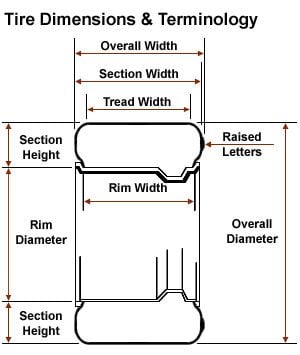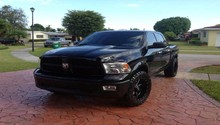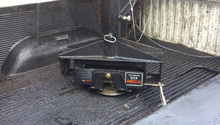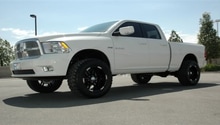Dodge Ram: Tire Modifications and Size Calculator
All-terrain and sport wheels and tires can add a cool look to your Ram, but just how big or small can you go?
This article applies to the Dodge Ram (1994-present).
Ram trucks come in all shapes and sizes, some regular cab, some mega cab, some two wheel drive, and some four wheel drive. Some owners like to keep them stock while others can't wait to customize them and make them their own. Regardless of which category you fall in, at some point you may need to replace your wheels or tires, whether because they've served their productive life cycle, or because you want to modify the look and performance of your Ram. Tires and wheels play the primary role in the handling capabilities of your truck, so beware that any changes to the stock setup could result in drastic changes in handling performance. That's why we've compiled this guide to help you make an educated decision regarding the wheel and tire modifications for your Dodge truck. Remember that if you are unsure about any of the info below, you should visit your local dealer or tire shop.
Wheel and Tire Modifications
How to Make Sense of Tire Sizes
If you've ever had to look at the sidewall of your tire, then you were most likely puzzled at what all those numbers and letters may mean. So here is a quick breakdown of the following tire sizes:
- 245: Describes the overall width of the tire from sidewall to sidewall in millimeters.
- 45: Describes the height of the sidewall in millimeters.
- Z: Describes the speed rating, which is the maximum speed at which the tire can be safely operated.
- R: Describes a radial tire.
- 19: Wheel diameter.
- 98: Describes load index, which is the highest weight load the tire could safely sustain.

How Big Can You Go?
Just because you think it can fit, or you think it will look good, doesn't mean it will actually fit or make mechanical sense to do so. While with certain modifications, the sky is the limit, you normally have to abide by a few rules of fitment. First, make sure that if you reduce the wheel size, you can clear the brake calipers. Second, if you increase the wheel and tire size, a spacer must be used to avoid rubbing the fender walls when turning.
- For Ram trucks 2WD, you can fit anything up to 33 inches just fine; anything more than that and up to 35 inches will require at least a two inch lift.
- For Ram trucks 4WD, you can fit up to 34 inches without any issues, and even with a two inch lift anything over 34 inches will rub the fender wall. Anything over 34 inches will require a 5.5 to 4.5 inch spacer.

What About Wheel Spacers?
Wheel spacers are sort of the magical little tool that can heal most wheel fitting headaches. Spacers are fitted in between the hub and the wheel, providing the necessary clearance in small increments. It's important that wheel spacers are used as a tool to fine tune a fitting and not to try and force a fitting that otherwise wouldn't be adequate or safe. Remember that using wheel spacers can and will most likely throw your factory alignment and suspension geometry settings off, as most spacers will alter the camber or caster of the wheel.

Pros and Cons of Going Big
Any time you step outside the parameters originally set by the factory, you risk having to deal with some side effects, and it's no different when you install bigger tires and wheels. First of all, big tires and wheels are more expensive and can wear out even faster than normal, therefore requiring you to spend more money more often. Handling capabilities like acceleration, braking and turning can also become drastically different. For example, not only will you have to readjust your speedometer for the new wheel diameter, but your braking distance can be affected negatively by the extra weight. Make sure that you are willing to deal with this on a daily basis.
Related Discussions and Site
- Dodge Ram Wheel Fitting Guide - Dodgeforum.com
- Understanding Tire Markings - Pepboys.com
- Wheel Spacers - Dodgeforum.com






